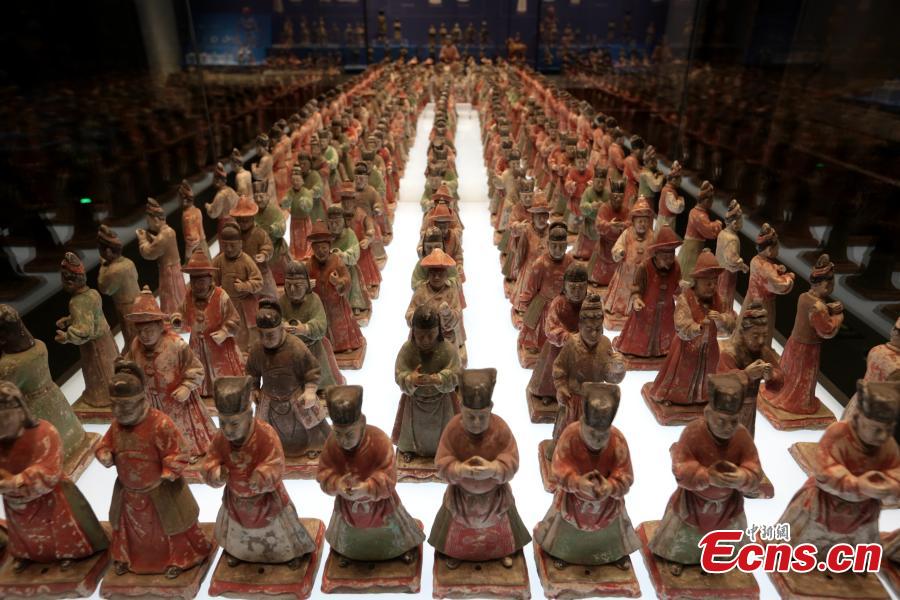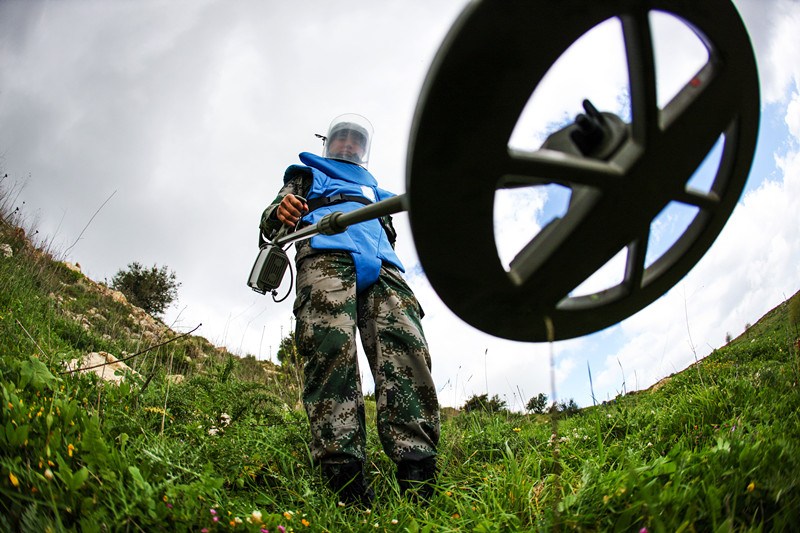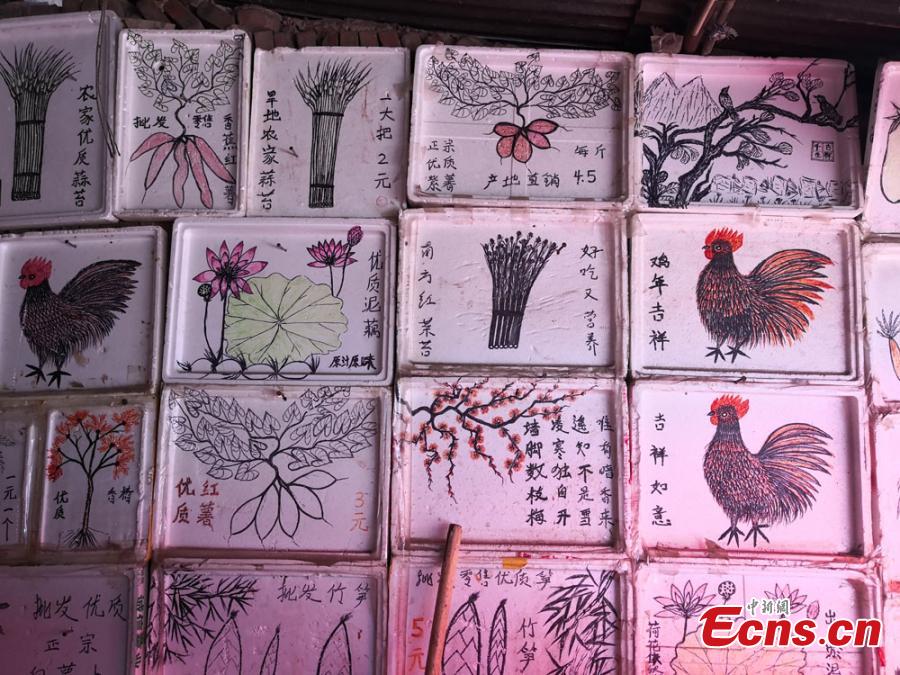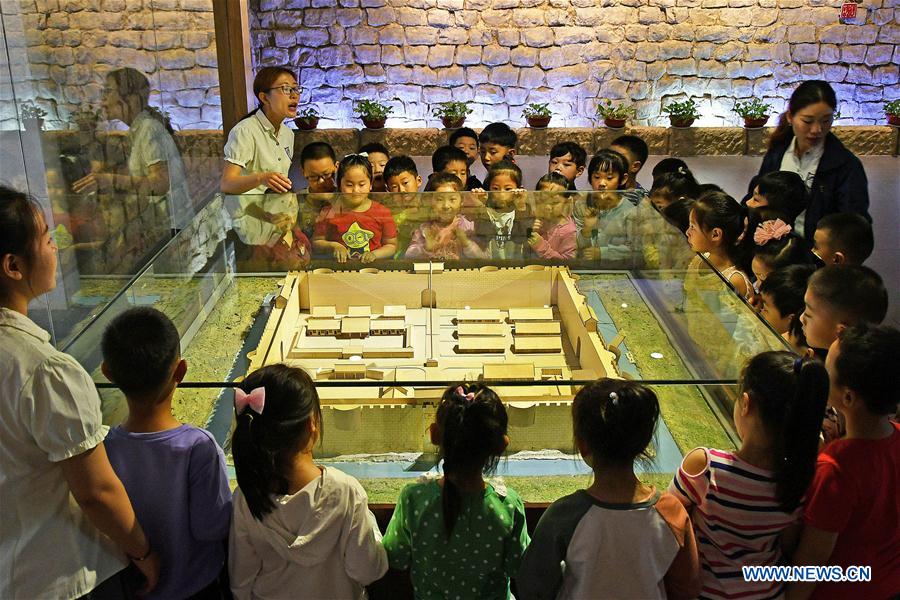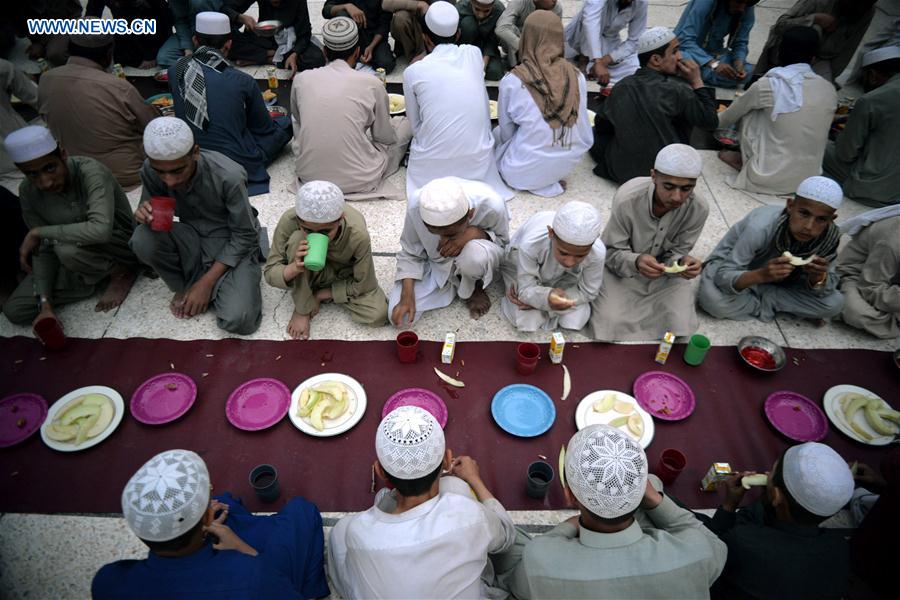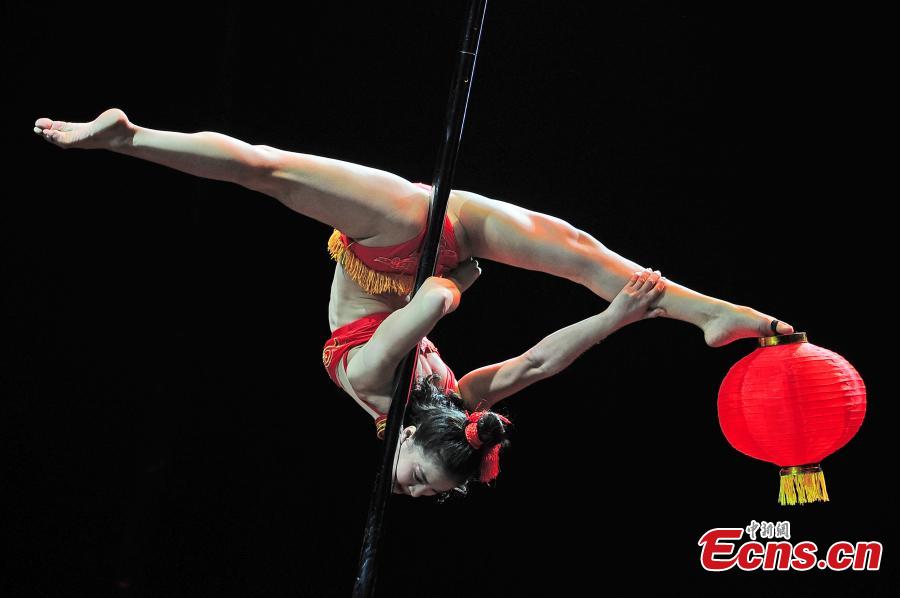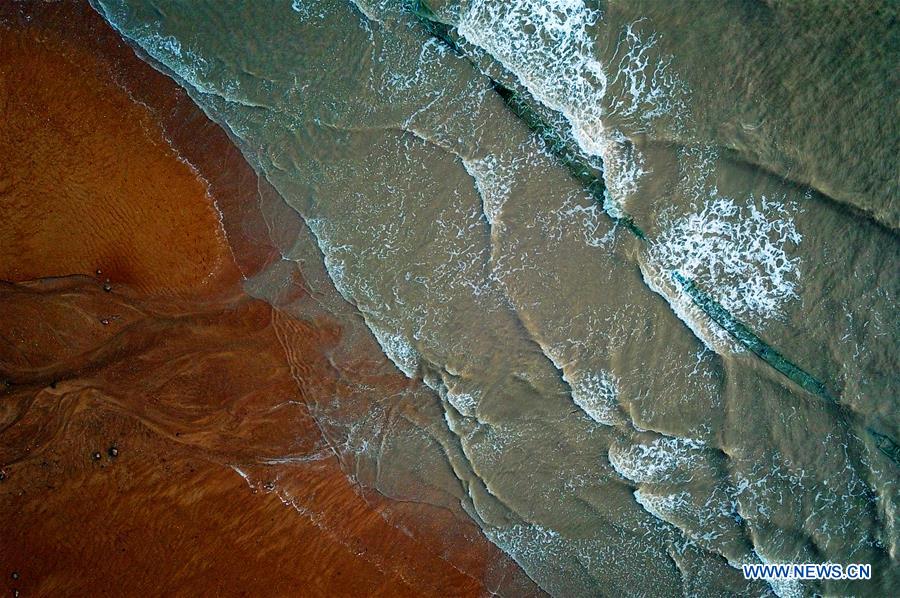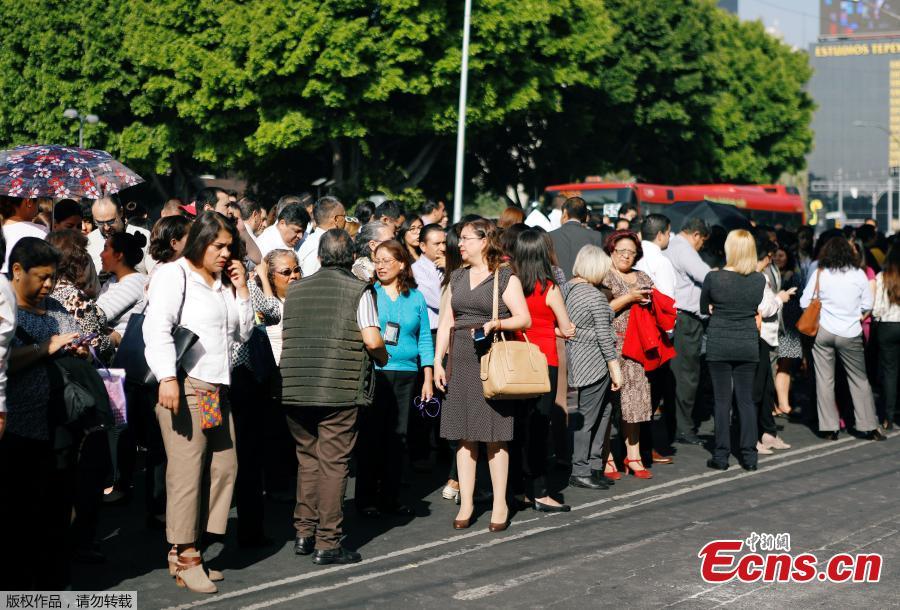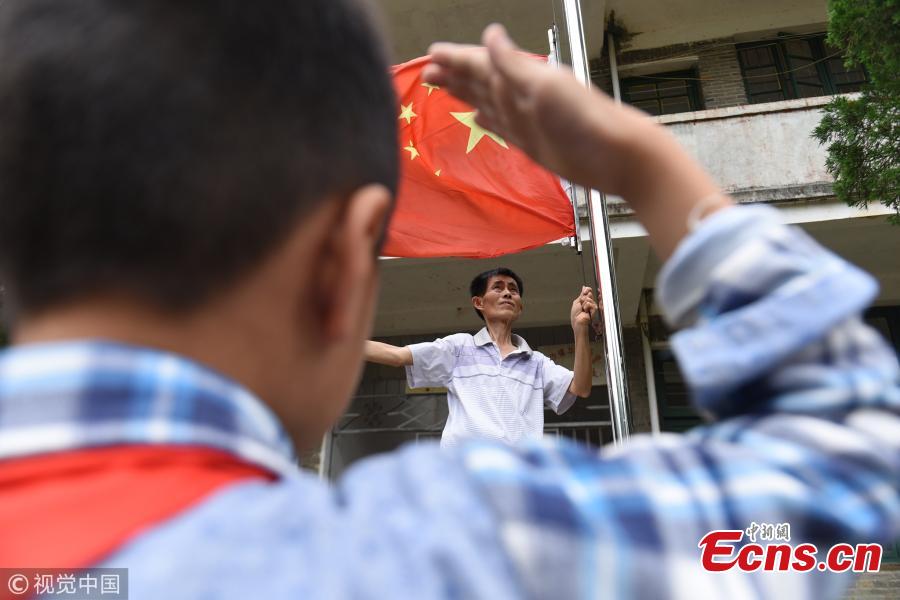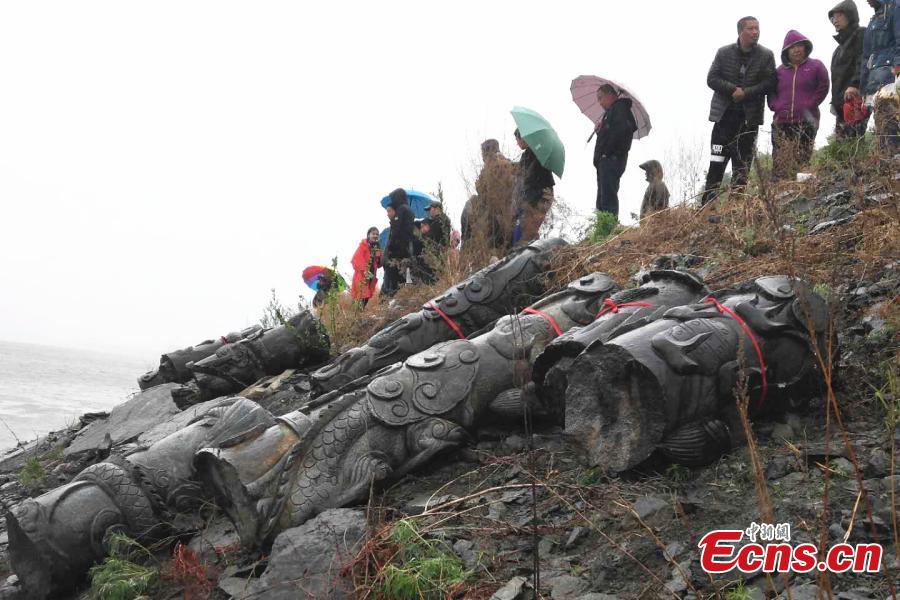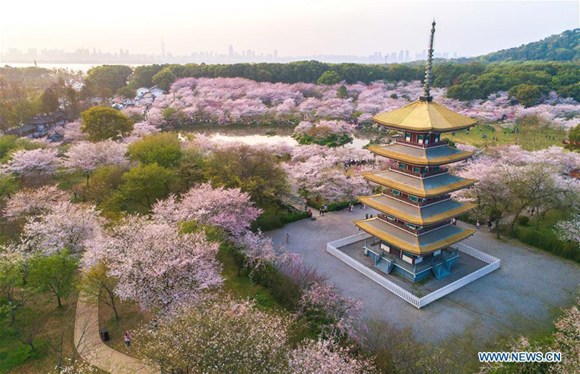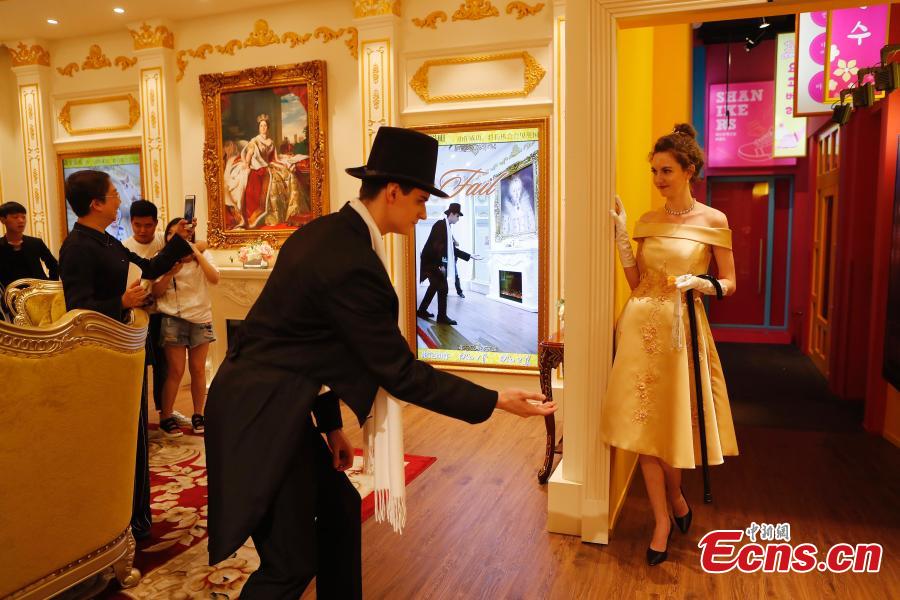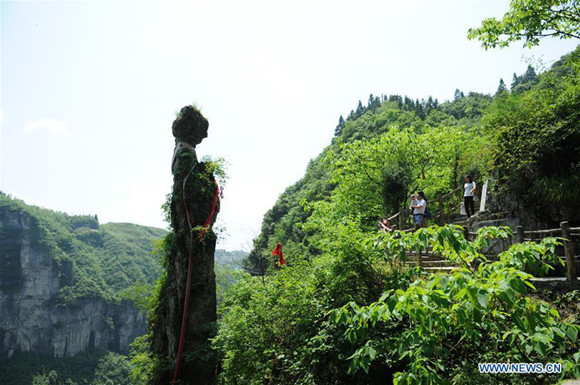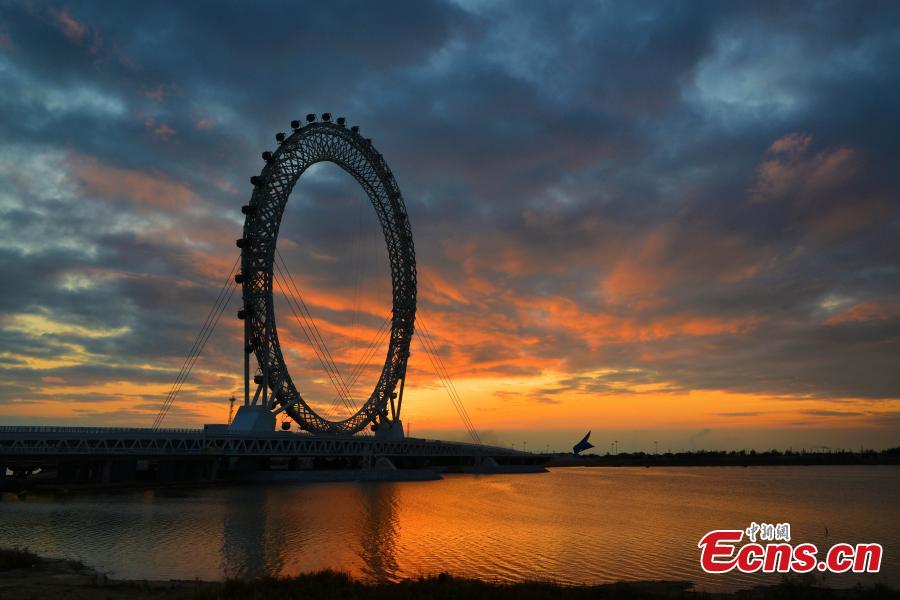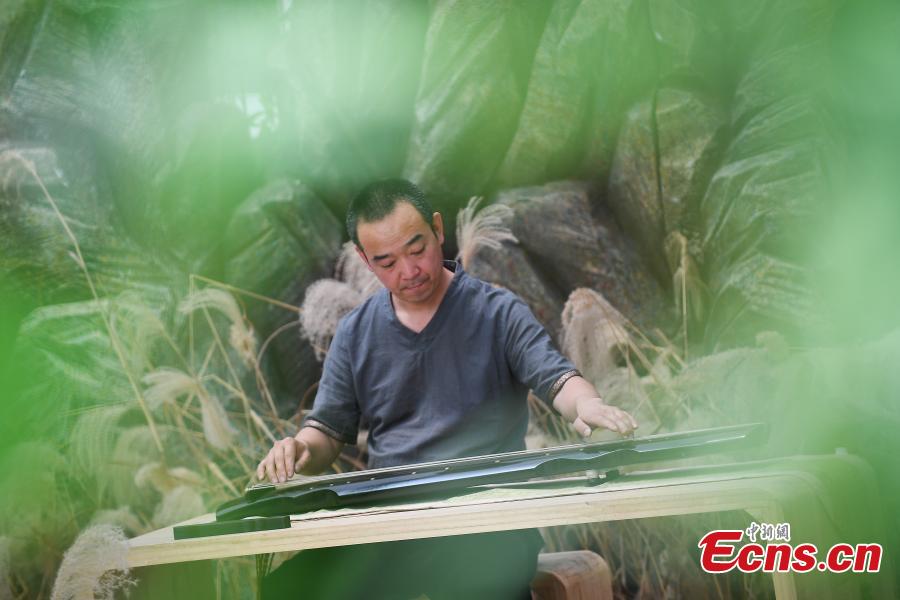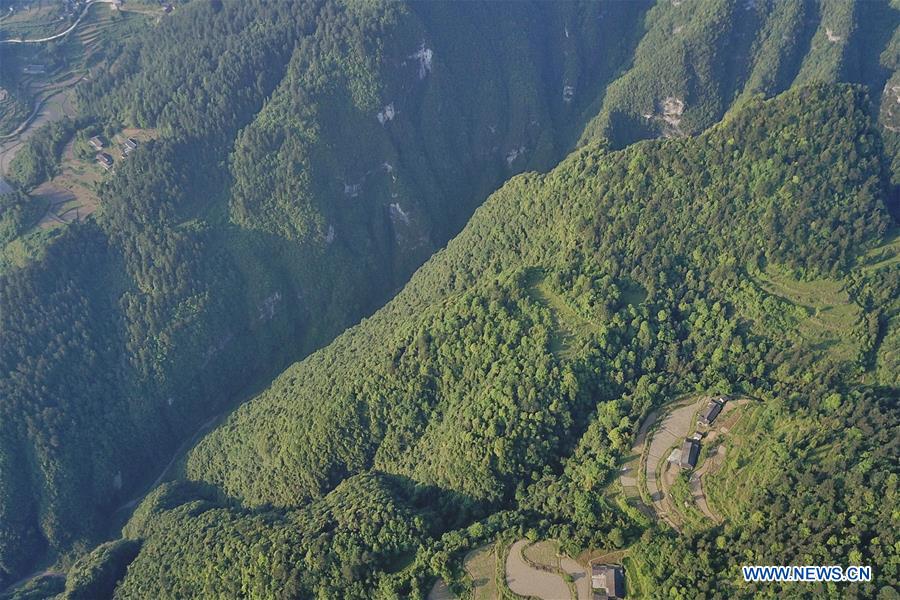
The ongoing exhibition at Shanghai Tower features fullsize replicas of grottoes in Dunhuang and precious cultural relics from seven museums in western China. (Photos by Gao Erqiang and Lin Shujuan / China Daily)
The Dunhuang grottoes are a living record of the ancient Silk Road. More than 700 sandstone caves contain frescos, paintings, sculptures and other relics from the pre-11th century eras.
In 1987, the grottoes, also known as the Caves of the Thousand Buddhas, became a UNESCO World Heritage Site. Facing threats of natural decay and human-induced damage, Dunhuang Research Academy has been working on a digital archiving project since the 1990s. After more than two decades in 2016, the academy launched e-dunhuang.com, a website offering virtual views of 28 of the Mogao Caves.
So far, the academy has completed the digitization of more than 100 caves, according to Zhao Shengliang, the deputy director of Dunhuang Research Academy.
"Dunhuang is a shared treasure of humanity and it is our responsibility to share Dunhuang culture with the world," Zhao says.
"We used to face a dilemma when it came to preservation and sharing. Digitization has solved that - it allows exhibitions of Dunhuang culture to take place at any time, and in any location."
If you go
8:30 am-8 pm, through Feb 28, 2019; entrance fee: 180 yuan ($28.6) per adult, half price for children. Shanghai Tower exhibition hall, Pudong New Area, Shanghai.










